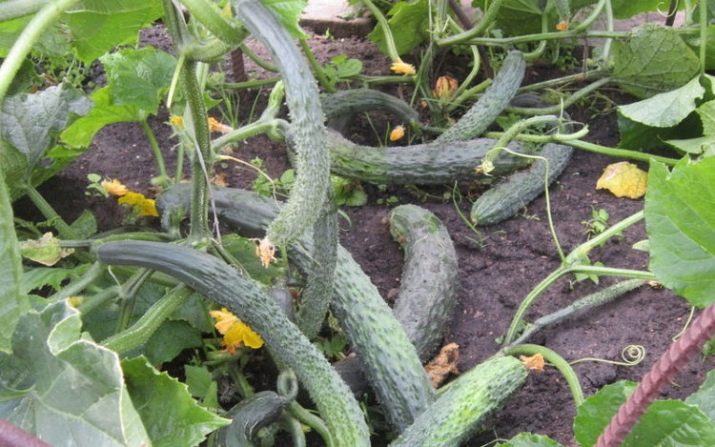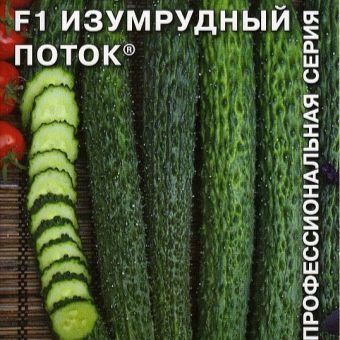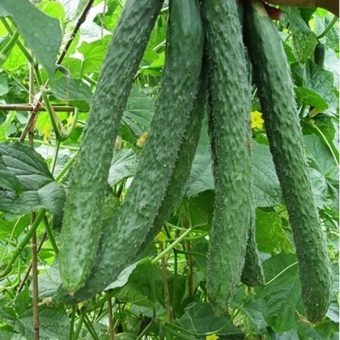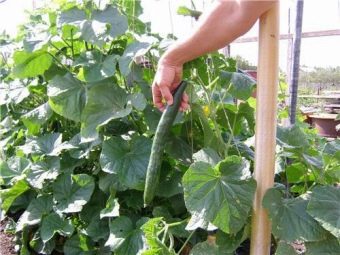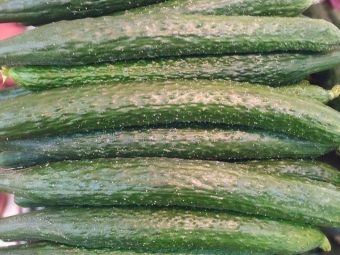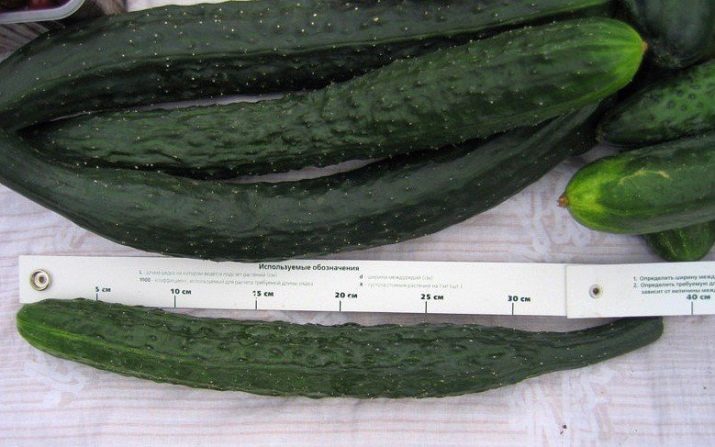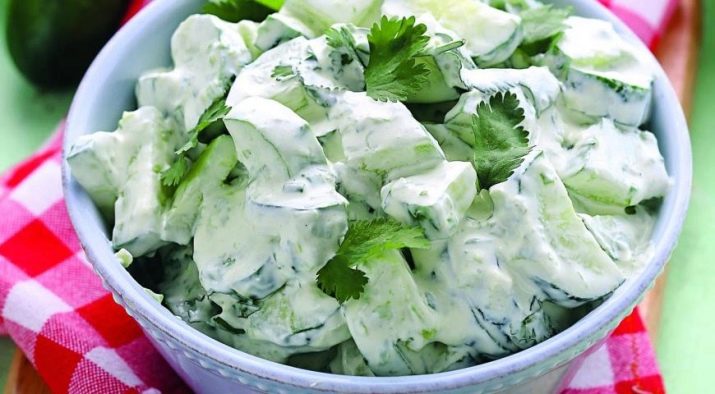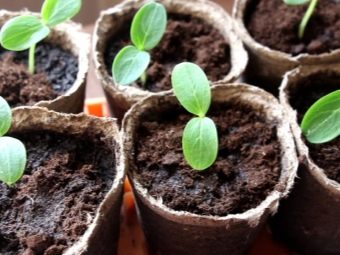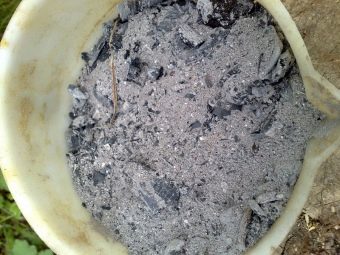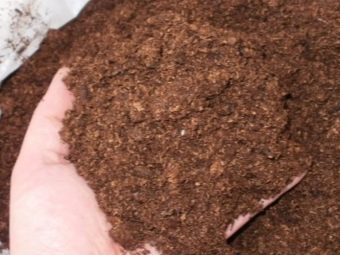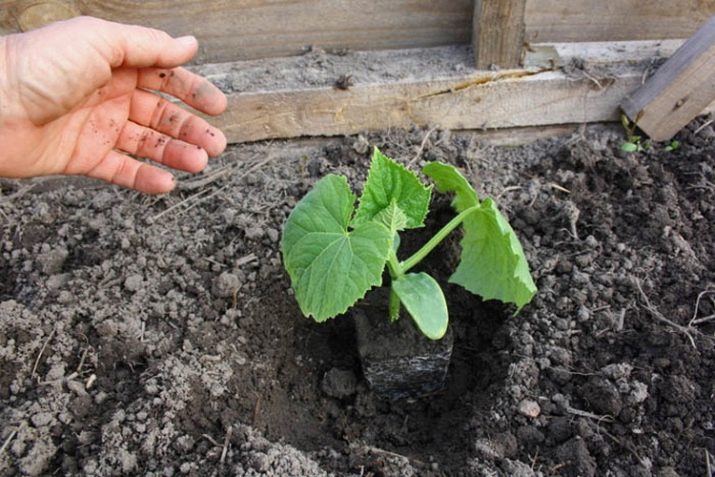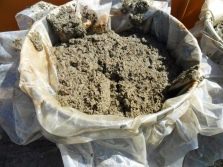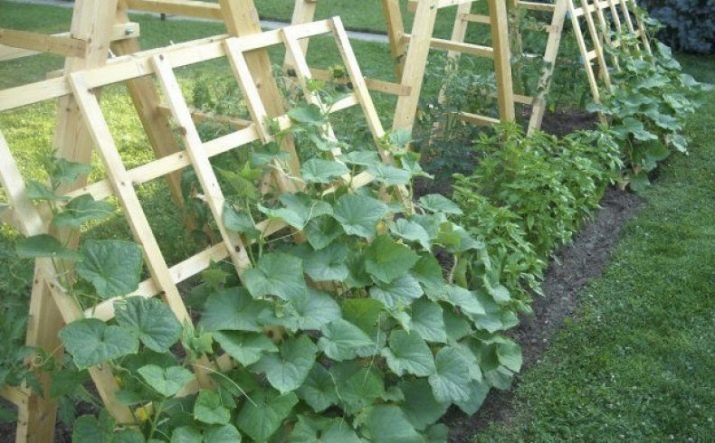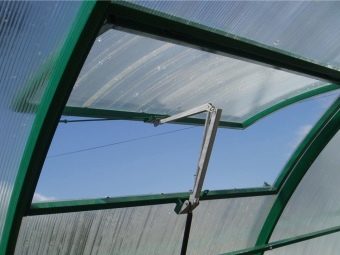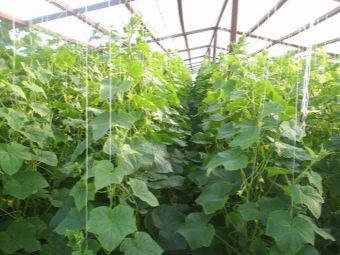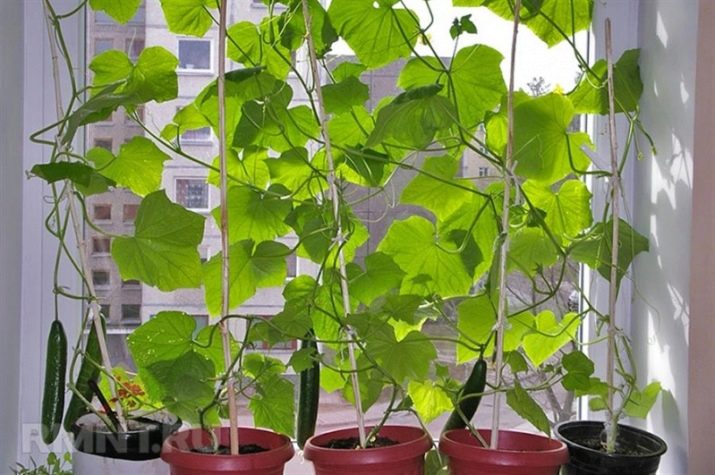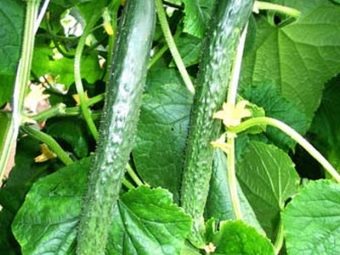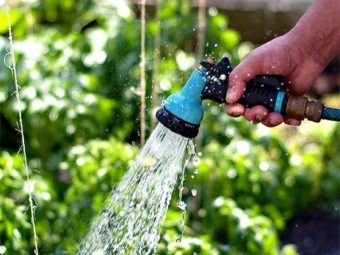Cucumbers "Emerald Flow F1": characteristics of the variety and the rules of cultivation
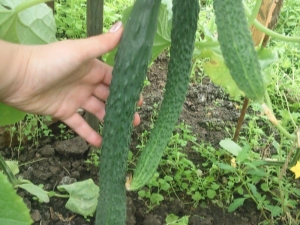
Both ordinary gardeners and large farmers often grow cucumbers on their plots.These vegetables are good both in fresh form and in the composition of various dishes, especially salads, and for various types of preparation (preservation, pickling). To achieve high yields of cucumbers can be achieved by proper selection of varieties of cultivated vegetables. Therefore, it is worthwhile to consider the characteristic of the cucumber variety “Emerald Flow F1” and the rules for growing this promising hybrid.
Special features
The Emerald Flow F1 cucumbers are a hybrid variety specially bred in 2007 by plant breeders of the Sedek Moscow agrofirm and belong to the parthenocarpic type of fruit formation. This means that this class does not need external pollinators to form a fruit, so it can be grown equally easily in greenhouses and on open ground. This variety blooms mainly on the "female" type - this means that most of its flowers contain pistils (and not are barren flowers), which means they are capable of forming fruits. The ovary is formed by the bouquet type.
In terms of ripening, these cucumbers are usually referred to as early ripening - after all, the first fruits on the bushes of the Emerald Stream appear only six weeks later after germination. At the first fruiting, most of the fruits are formed almost simultaneously. New fruits of this variety during the growing season are formed immediately after the removal of mature.
The combination of a large height of bushes and medium-sized climbing results in the need to use a stable support when growing the "Emerald Flow".
Benefits
Due to the excellent resistance of this hybrid to both heat and cold, its bushes will continue to delight with new fruits until the very first serious frosts. Well, this breed of vegetables tolerates and low light, and even drought. Specialists of “Zedek” managed to achieve excellent resistance of their hybrid to the dangerous disease of cucumbers - powdery mildew. Such pests as spider mites and even aphids are less dangerous for the Emerald Stream than for most other breeds. The main enemy of this hybrid is various root rot, which infect it on average more often than other varieties.
The combination of a long period of fruiting, excellent resistance to extreme climatic conditions, diseases and pests provide excellent yield of this cucumber. On open ground, it reaches seven pounds of fruit per square meter. At the same time on each bush up to five fruits can ripen at the same time.
Fruit
A characteristic feature of the fruits of the variety "Emerald Flow F1" is their elongated shape. The average length of a ripe fruit ranges from 25 to 50 centimeters with a mass of about 200 grams. Individual gardeners grew specimens up to 80 centimeters long, but usually so long fruits begin to turn yellow and lose their qualities. Although most fruits retain their correct cylindrical shape, their bending is not considered a developmental disorder.
Ripe cucumbers are covered with thin and tender dark green peel with longitudinal white stripes. The surface of these fruits has a large number of tubercles of medium size and covered with hard spikes. Therefore, the harvest of this hybrid is better in gloves. Seed chambers inside cucumbers of this variety are small in size, most of the volume of the fruit is occupied by juicy and crunchy pulp. The fruits of this hybrid are almost never bitter and have a characteristic pleasant cucumber flavor. In general, all experts evaluate the taste qualities of this variety on a solid “top five”.
Application
Excellent taste and huge size of the fruit make the "Emerald Flow" an ideal option for making salads. Not bad when cooking in salted form. But their conservation is undesirable, since most fruits simply do not fit in a jar, so they will have to be cut, which will affect their taste.
Planting and care
Because of the exposure to root rot cucumbers, an important condition for the cultivation of this variety is compliance with the irrigation regime.Watering should be sufficiently abundant, at least 3 times a week. On hot days, whenever possible, it is worth watering the beds every day, but only after sunset.
In this case, watering should in no case be carried out “under the root” - water should flow between the rows of bushes and moisten the ground around them.
Thanks to a combination of simplicity and sustainability, this hybrid can be grown in many different ways:
- from seedlings to open ground;
- sowing seeds in open ground;
- from seedlings to the greenhouse;
- at home.
Consider the features of each of these methods. Before planting the seeds of this variety should be treated with potassium permanganate, special growth promoters or aloe juice. To dry, the seeds are then spread on a soft cloth, where they are often and begin to germinate. It is not recommended to use paper for these purposes, the seeds often stick to it.
An important feature of growing cucumber seedlings is that damage to the roots during transplantation can significantly reduce the percentage of established bushes. Therefore, one should not even try to grow seedlings of this variety in boxes; it is best to plant seeds two pieces each in disposable plastic or paper cups filled with high-quality earth.
The ideal option would be to use special peat cups. After planting seeds cups need to cover with a thin transparent film and place in a bright and warm place.
Seeds germinate best in store soils for seedlings. Quite good results are shown also by the use of homemade mix:
- 3 volume parts of turf;
- 1 part of the humus;
- 1 part of sand (river is better);
- a glass of ash (preferably wood).
Before planting seeds, soil in cups is poured over with boiling water. Landing is done after the earth has completely cooled and slightly dried. Watering seedlings in the first days of its germination is important to produce very carefully. The teaspoon is best suited for this purpose. Watering is necessary not immediately after disembarking, but only when a small stalk ascends. In this case, watering should be carried out around it, so as not to wash the stem from the soil. It is important to use warm water for irrigation. Plain tap water is not suitable here, thawed, filtered or water that has settled for a couple of days is best shown.
Since the “Emerald Flow” is a strong and unpretentious hybrid variety, in most cases, its seedlings do not require special feeding. In rare cases, when sprouts come out stunted and develop slowly, they can be fed with yeast, grass or ash solution.
As soon as 2 to 4 full-fledged leaves appear on the sprouted stalks, the seedlings will be ready for further transplantation into the greenhouse or the open ground.
How to grow in the open field
Planting seedlings in the ground is in early spring, but only when the average daily temperature exceeds + 14 ° C. First you need to loosen the soil in the garden, and a few days before transplanting seedlings, make natural fertilizers, such as ash, manure or compost. Direct sowing of this variety can be carried out starting from the second half of April - beginning of May, with an average daily temperature of at least + 18 ° C. At the same time, the planted seeds should be covered with a film.
The best scheme for growing this variety: the distance between the rows is 50 cm with the distance between the bushes in a row of 30 cm. The entire period of growth can be made dressing, in which quality humus, chicken droppings or manure have proven themselves. In addition, it is important to regularly weed the beds. To increase the yield you can apply the molding of the bushes by cutting the side branches. At the same time, it is worthwhile to leave a fragment of the whip to be removed to prevent the appearance of new ones.
Since the bushes of this variety grow very high, the use of trellis is well recommended. However, their height should be about two meters.As the basis for the grid suitable design of metal pipes or wooden bars. The method of growing without a trellis is also permissible, but the bushes at the same time will run along the ground, and the fruits growing on them will often be deformed.
How to grow in a greenhouse
To grow the "Emerald Flow" on protected ground should be a vertical method, tying hybrid bushes to the frame of the greenhouse used. The general principles are the same as for outdoor cultivation. During watering, it is important to ensure that water drops do not remain on the leaves of the bushes. To avoid increasing humidity, after each watering the greenhouse needs to be aired. Top dressing in greenhouse conditions is made at least three times per season.
If the location of the greenhouse at the site does not change from year to year, it is important to regularly change the fertile soil layer in it and fertilize it with complex mineral compounds.
How to grow at home
To grow this variety at home, you need to prepare in advance for the bushes pots of five to seven liters. The seedlings prepared by the method described above can be transplanted into them as early as mid-February. It is possible to fix tall hybrid bushes with the help of a twine.
It is important that the room has good lighting and plenty of space. Plant care is similar to the case of cultivation in the open field.
Reviews
Almost all gardeners who have tried to grow the Emerald Flow F1, leave only praise for his taste and ease of cultivation of the variety. Authors of reviews often note high yields and a long period of fruiting of this variety.
The main disadvantage of this hybrid is that summer residents consider the need for strict adherence to the irrigation regime to exclude the possibility of the development of root rot.
Review the variety of cucumber "Emerald flow F1", see the following video.

